About
Matt has focused his career upon the development of complex simulation frameworks and required interfaces to allow these powerful tools to be used by a wide variety of people. Holding his PhD in Mechanical Engineering (2013) from the University at Buffalo, he is well versed in the mathematics, physics, and software programming methods associated with CFD and FE based formulations. He is experienced in developing models using a wide variety of frameworks and languages including full web stack, modern software methods, and developing new computational methods/tools.
It was during his tenure at the University at Buffalo that Matt first developed his desire to help animals. After rescuing his first dog Tucker, Matt served as a founding board member of the NonProfit Friends of Ellicott that was chartered to established a local dog park. After moving to Salt Lake City he found himself volunteering with Community Animal Welfare Society, eventually joining the Board of Directors and becoming president. Matt's skill sets have overlapped in both nonprofit and professional pursuits as he developed software, policies, and procedures to present complex tasks and tools to people.
Experience
Leading development and integration efforts of the Center's shared computational framework ABLATE - Ablative Boundary Layers At The Exascale
Tasked with developing application and supporting framework in-order to expose multiple physics based solvers to Ansys customers for Additive Manufacturing modeling.
Took on the role as lead high performance computing research engineer tasked with the development of new frameworks and extension of existing frameworks to HPC applications along with the user interfaces to access the software.

Computational Energy Transport LaboratoryResearch Assistant, 2008 – 2013 Advisor: Dr. Paul DesJardin Buffalo, New York

Computational Energy Transport Laboratory
Dissertation research involved the computational investigation of flame spread over charring materials. Numerical solution approaches include an Eulerian-Lagrangian moving immersed interface method for simulating burning solids including and finite element model for the thermal response of charring materials in fire environments including:
Served as teaching assistant for undergraduate courses in heat transfer and fluid dynamics. Conducted weekly study sessions with an average attendance of about a dozen students.
Designed GenSys external power conditioning module enclosure and developed factory calibration and functional test specifications for GenGore Fuel Module requiring the design and implementation of the hydrogen fuel module factory test equipment along with the derivation of the associated acceptance criteria.
Education
University at Buffalo, the State University of New York
GPA: 3.933/4.0; Advisor: Dr. Paul E. DesJardin
University at Buffalo, the State University of New York
Specialization in Fluid and Thermal Sciences, GPA: 3.91/4.0
University at Buffalo, the State University of New York
Graduated Magna Cum Laude, GPA: 3.70/4.0
Related Work
Publications & Conference Proceedings
Invited Talks and Tutorials
MAE 502 ‐ Research Methods in Mechanical and Aerospace EngineeringGuest Lecturer ‐ Spring 2023 ‐ University at Buffalo
Developed and presented lectures covering basics in modern software development methodology, programming, and visualization/plotting.
Coding ABLATE Self‐Guided Tutorial2022 ‐ University at Buffalo ‐ CHREST
Developed online course designed to prepare new developers for contributing to ABLATE and include git/version control, IDE/debugging, c/c++, PETSc, and ABLATE. The course is composed from multiple resources including book chapters, online tutorials, videos, manuals, and custom content.
CCR’s Learning Lab Seminar SeriesInvited Speaker ‐ December 8, 2021 ‐ Buffalo, NY
Provided overview of the Center for Hybrid Rocket Exascale Simulation Technology framework development and methodology.
Community Animal Welfare Society Foster/Volunteer OrientationDeveloper and Author ‐ 2019/2020 ‐ Salt Lake City, Utah
Developed the framework and contributed to the content for a volunteer and foster based online tutorial/course series. Courses included text and video content customized for each volunteer based upon their roles.
Training & Professional Activities
Argonne Training Program on Extreme-Scale Computing (ATPESC)Activities July 30 – August 11, 2017 in St. Charles, IL
Two-week training on the key skills, approaches, and tools to design, implement, and execute computational science and engineering applications on current high-end computing systems and the leadership-class computing systems of the future.
NonProfit Leadership
CAWS is a no-kill, volunteer and foster-based 501(c)(3) nonprofit organization whose mission is working with the community to help animals. As Utah’s oldest animal rescue group, our ongoing rescue, foster, education and adoption programs help animals whose time is up at shelters, those who are abandoned, and as our resources allow, those whom their owners can no longer keep.
Board President • Board Secretary • Dog Adoption Coordinator
Board President 2019 – 2020
Board Secretary 2017 – 2019
As a volunteer based organization, CAWS's most valuable resource is volunteers. During the time as secretary, I focused upon providing policy and technological tools to volunteers including:
Dog Adoption Coordinator 2016 – 2018
The organization was founded to work with Erie County Park office to establish an off-leash dog park within the county parks. The organization is responsible for fundraising, dog park rules/regulations, improvement projects, liability insurance, and community outreach.
Current Project
Serving in both a volunteer and leadership role within CAWS, the need for a central location for communication was needed. To address this need The CAWS Den was developed. The primary objectives behind the development of The CAWS Den were
The CAWS Den is composed of a single page web application built using React-Redux and a custom Go server responsible for merging local and remote data from multiple resources.

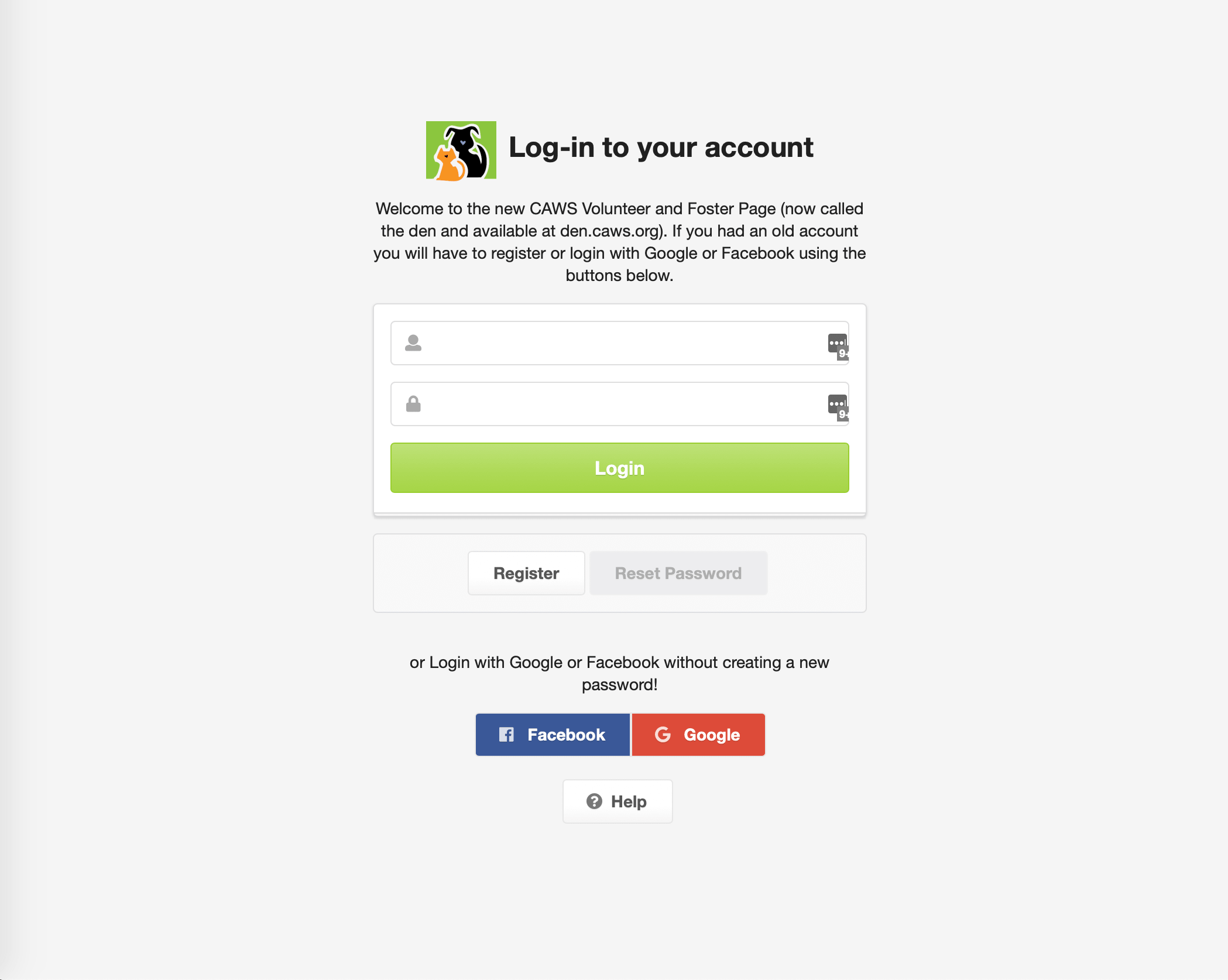
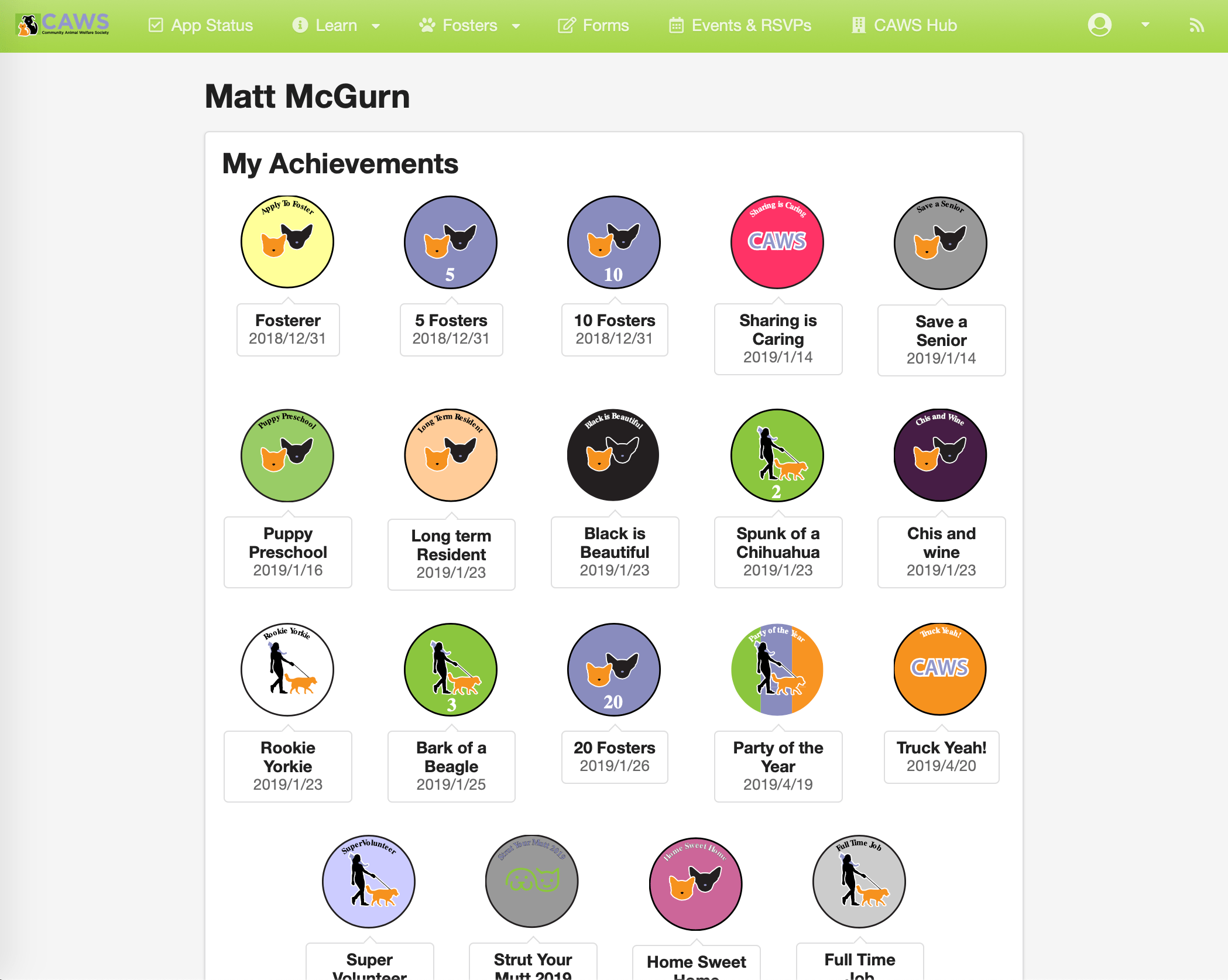
The custom written go server handles user, animal, achievement, events, etc. while combine data from multiple sources. Key features include:
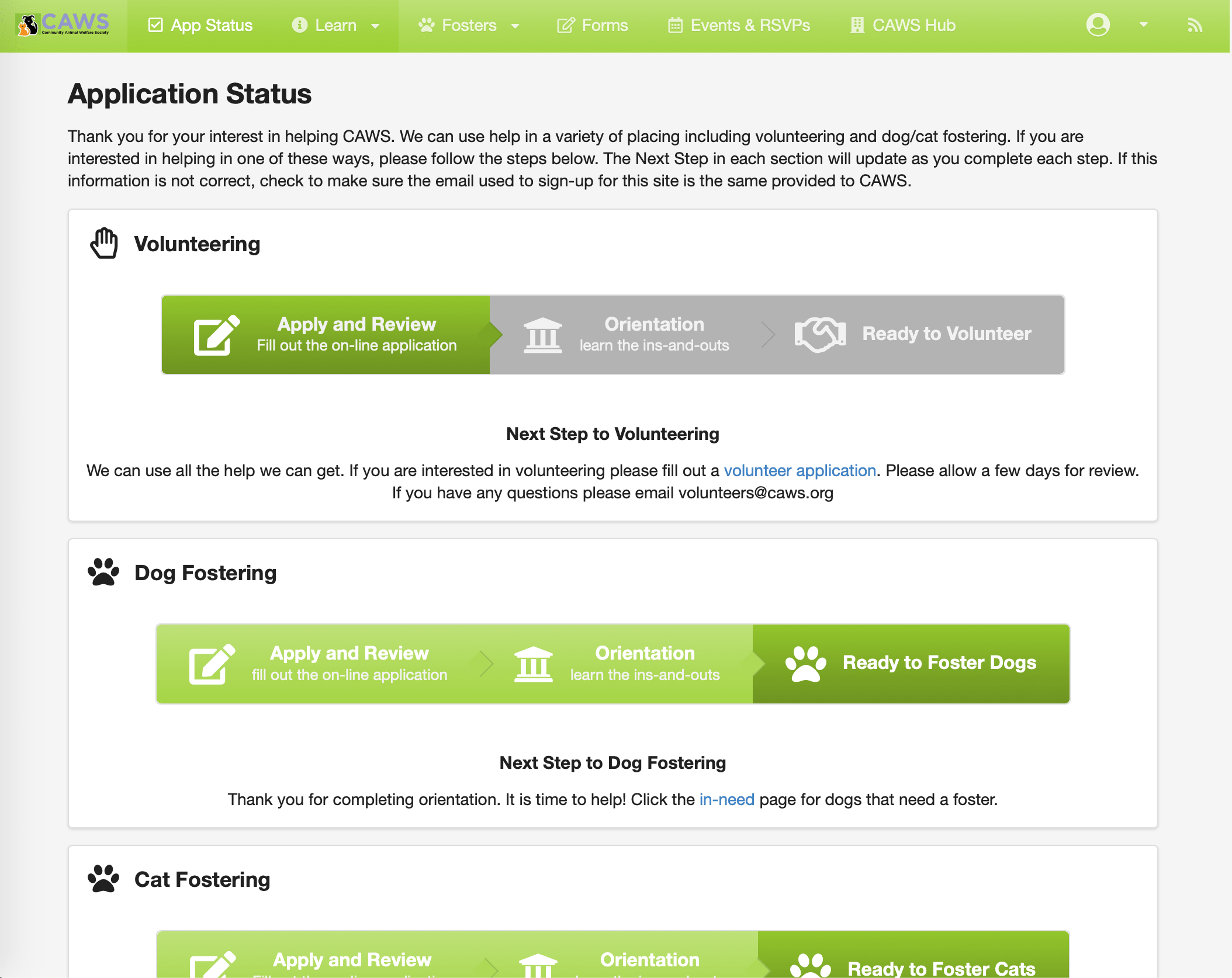


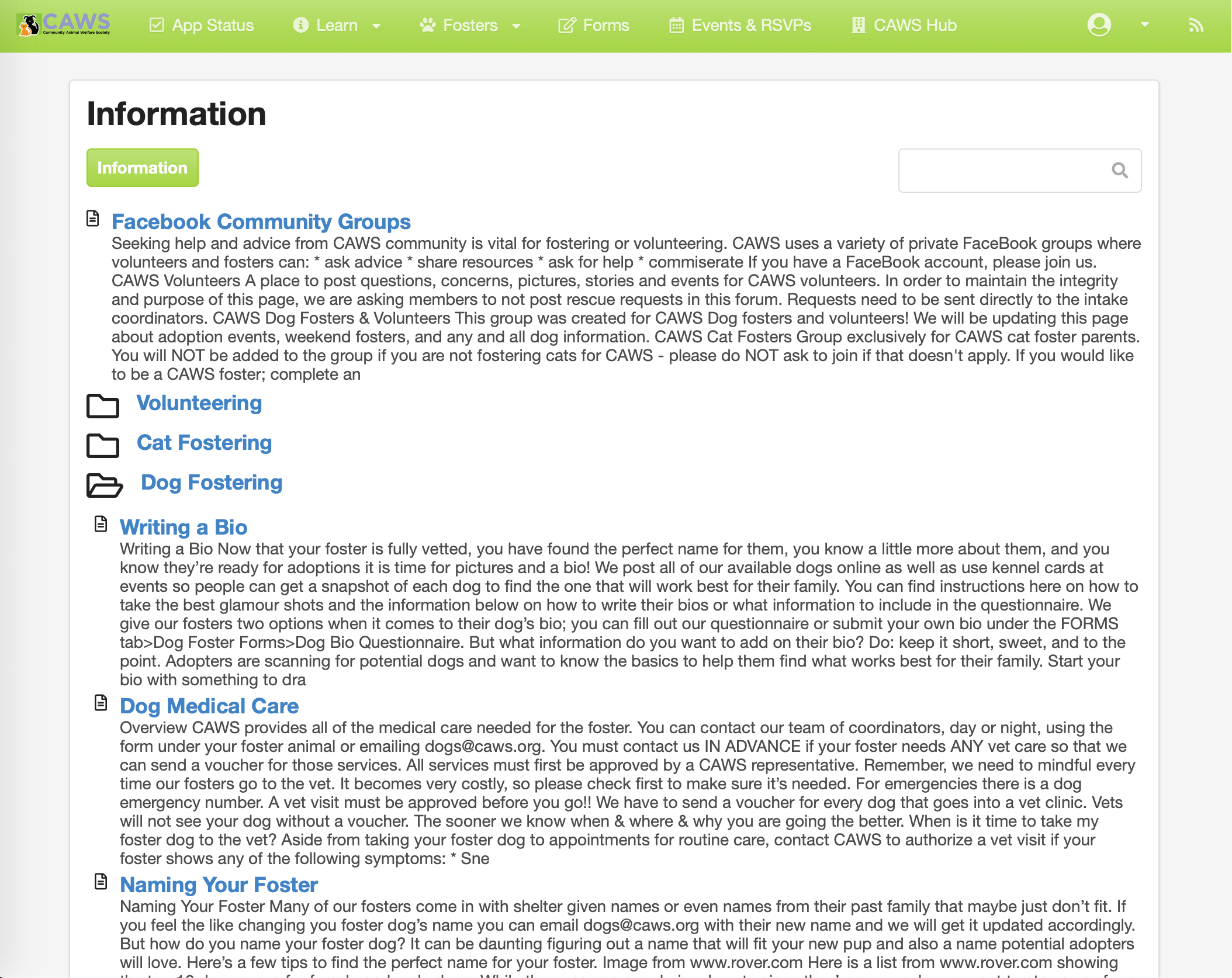
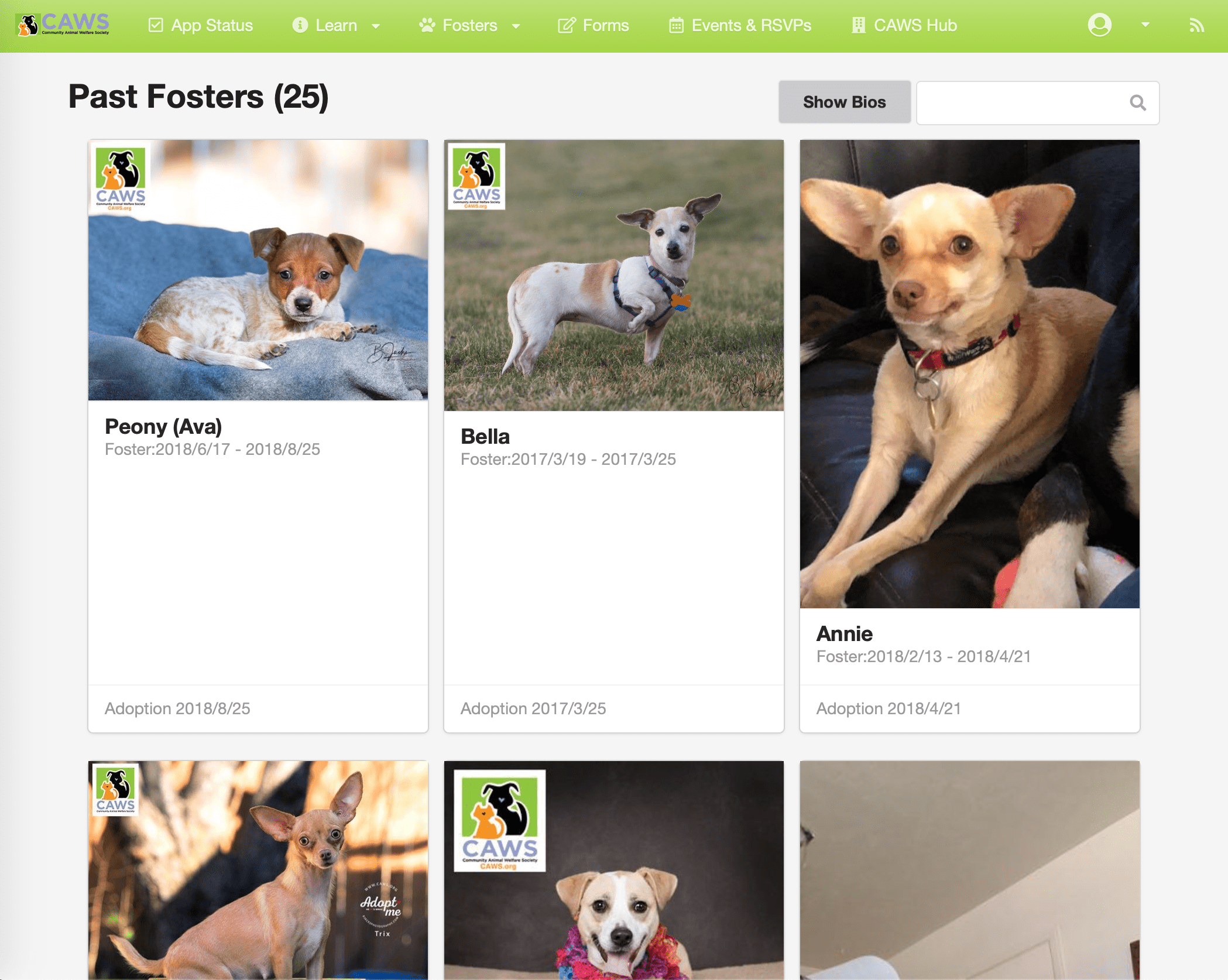
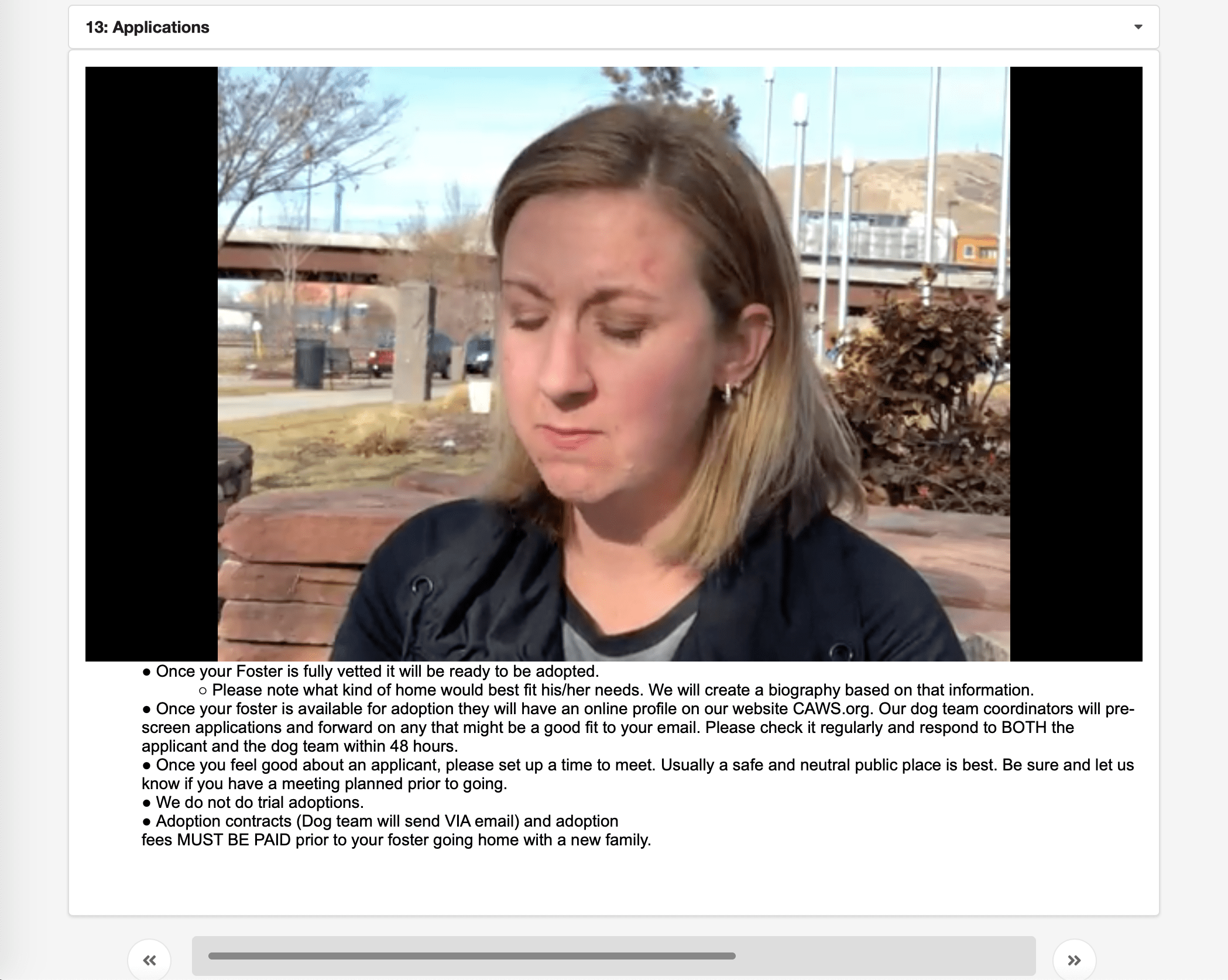

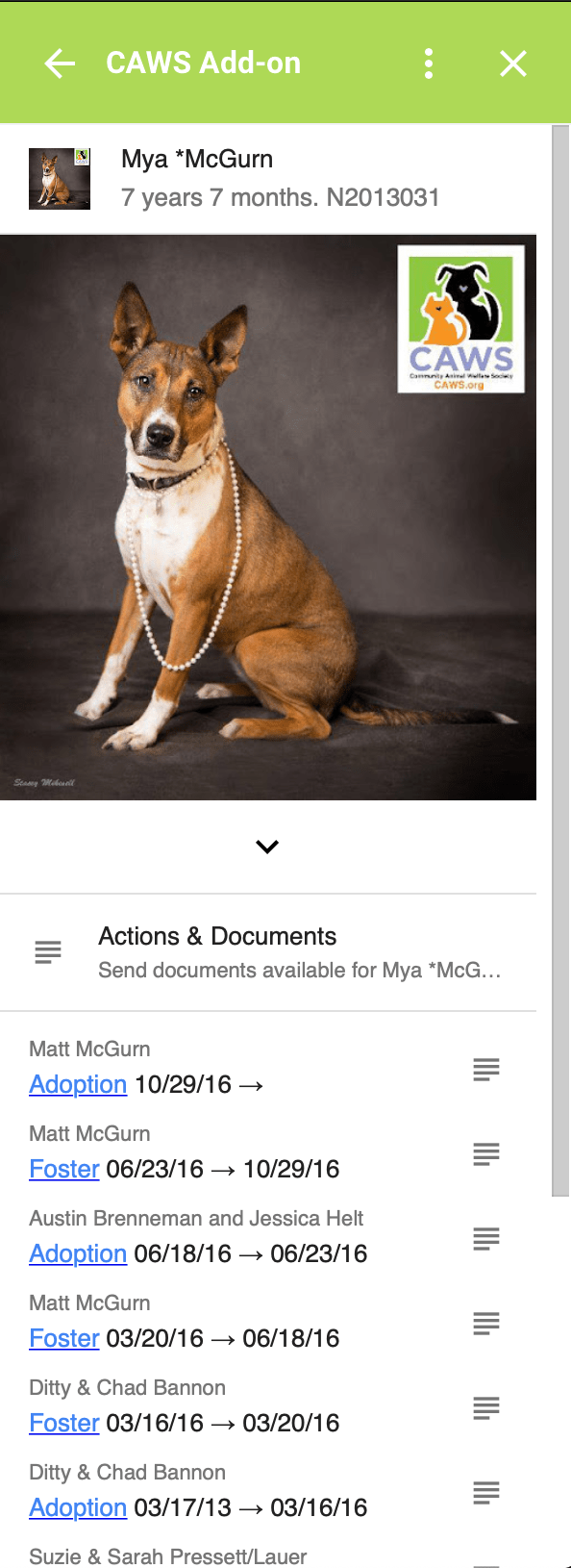
Fostering & Volunteering
I first started with CAWS as a foster and volunteer. What motivates me and keeps me helping is the difference in lives (both human and dog) that fostering can make. Each of these dogs has now found their their forever home.





